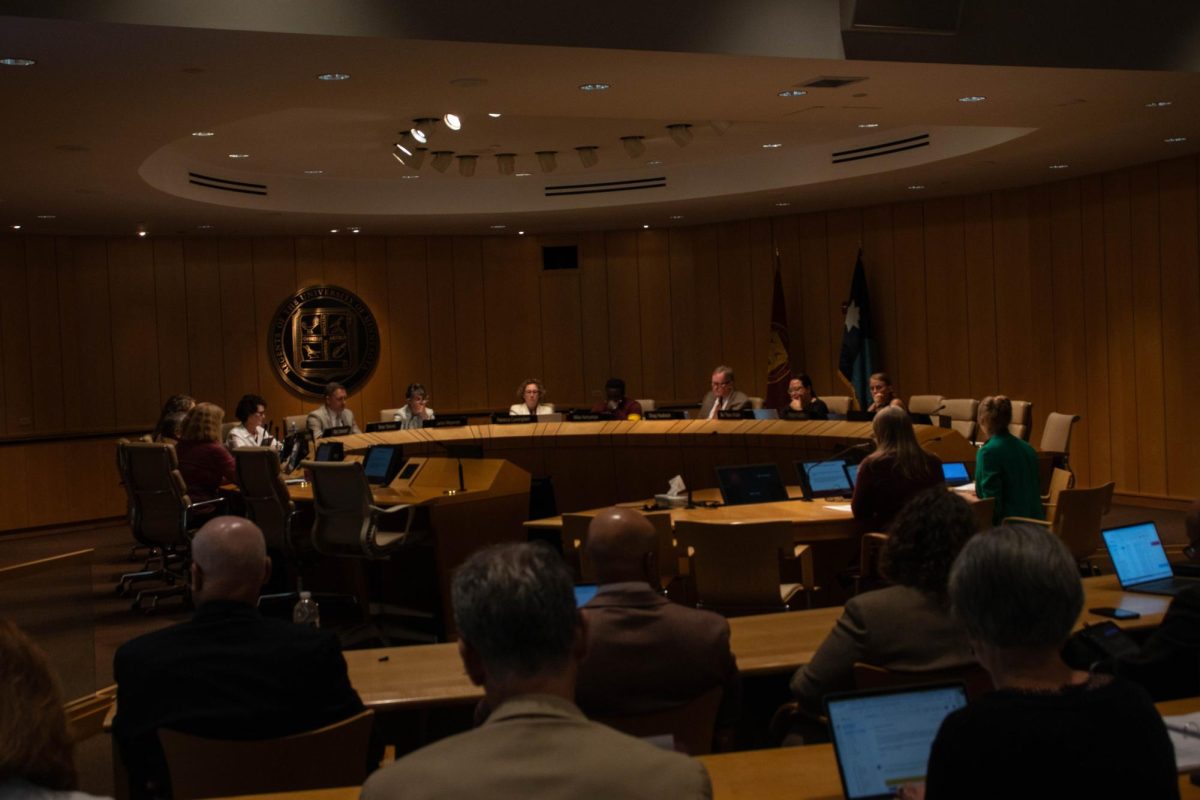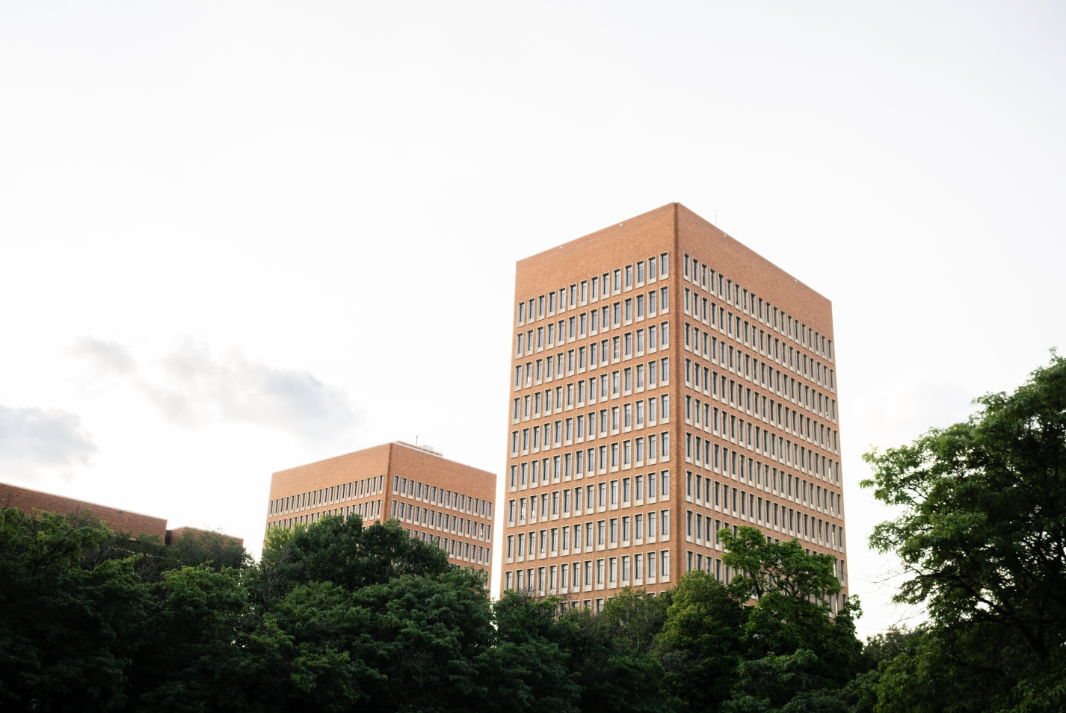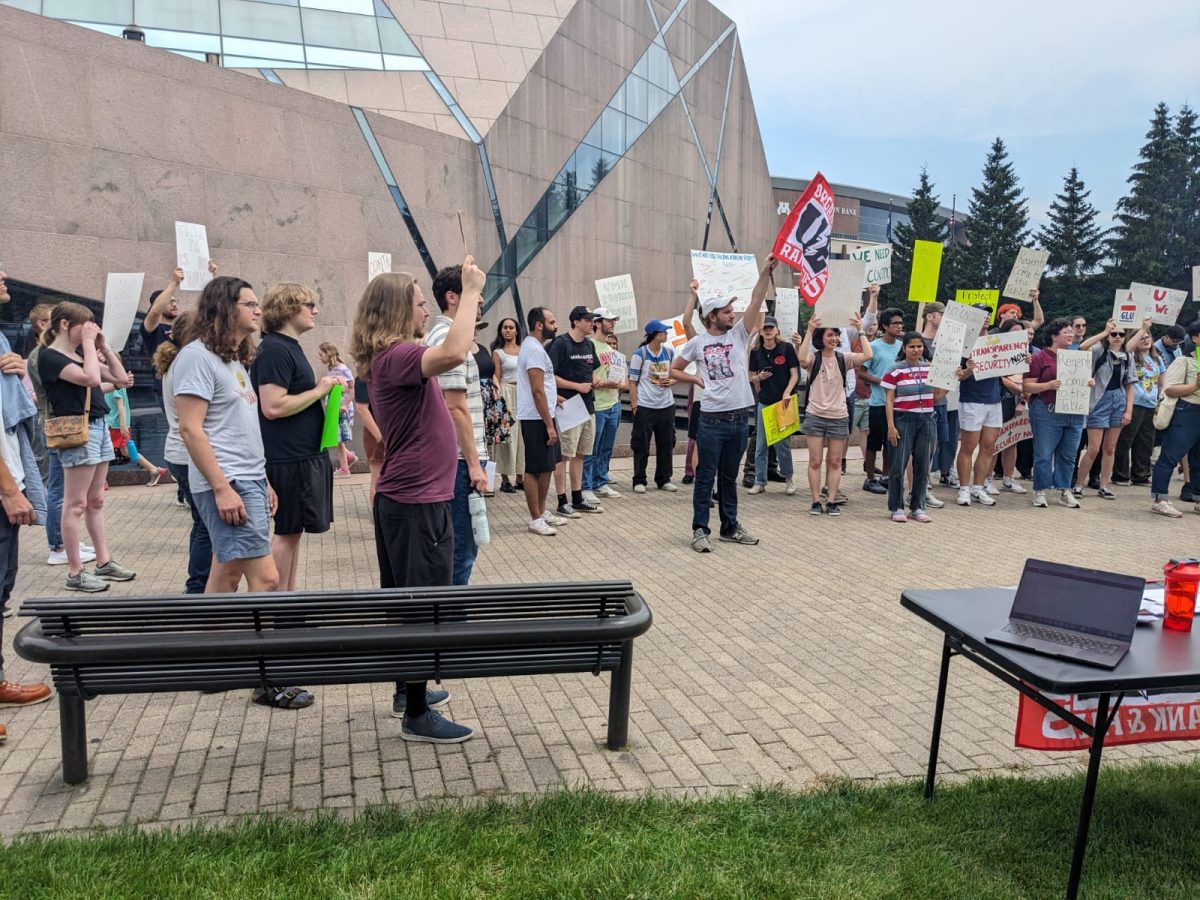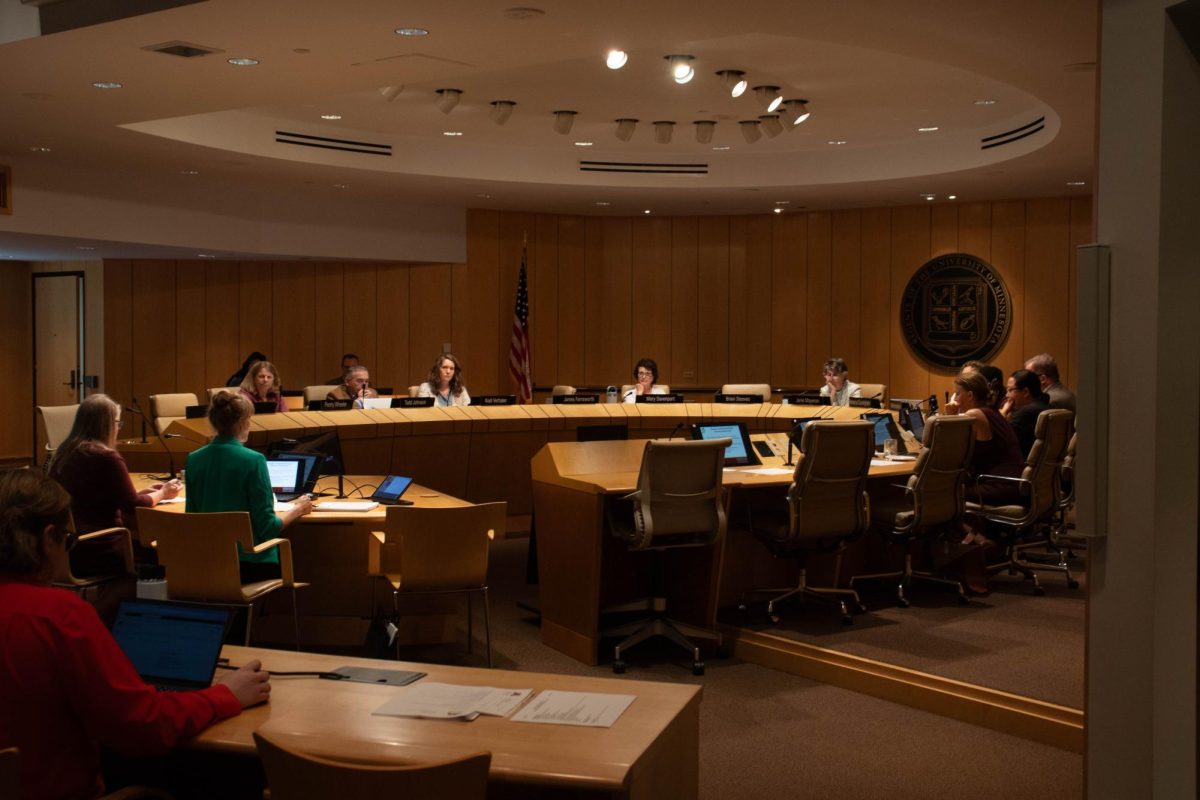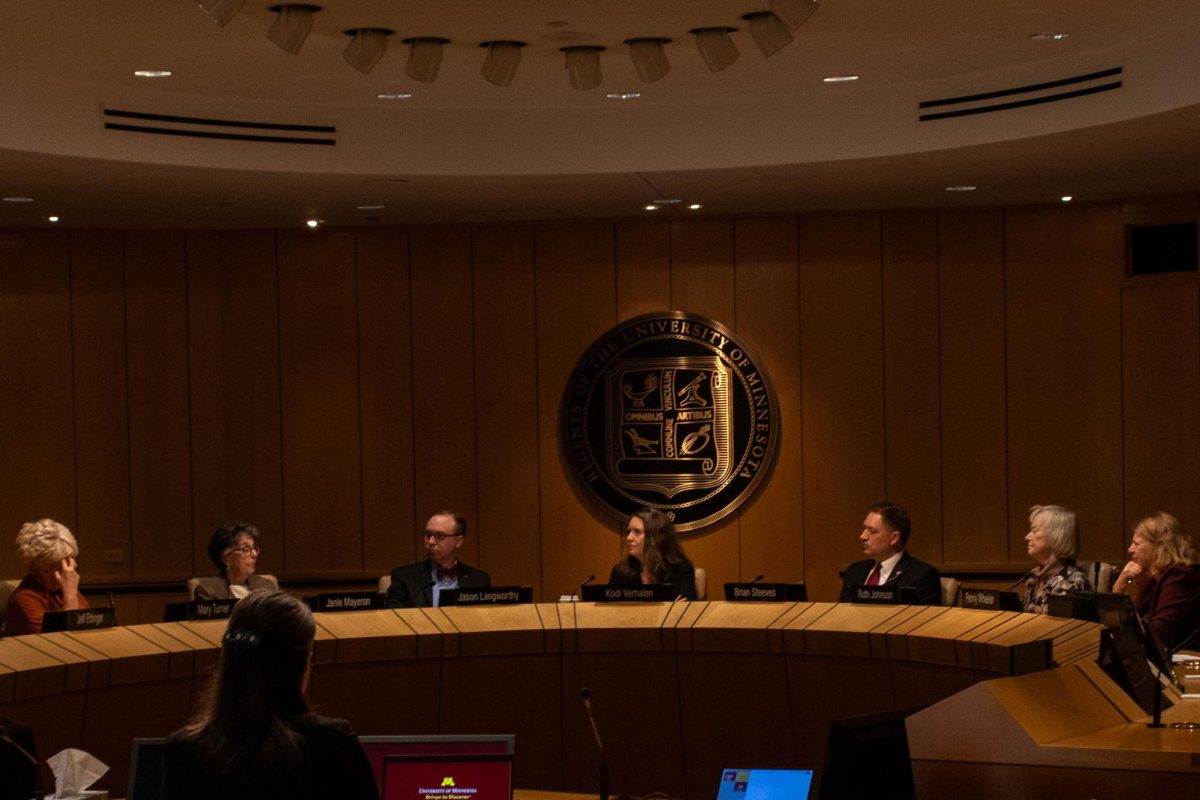After the U.S. Supreme Court decision rejected race-conscious admissions at colleges and universities reversing decades of precedent, the University of Minnesota is continuing with its changes taken in July to comply with the ruling.
In a 6-3 decision in Students for Fair Admissions v. Harvard and North Carolina, the Supreme Court struck down the consideration of race as one of many factors for universities in deciding who to admit, NPR reported.
Bottom line up front
In a Sep. 7 Board of Regents speech, Provost Rachel Croson reaffirmed the University’s commitment to enrolling and graduating a diverse student body despite considerations of race not being permissible.
“We continue to be able to evaluate each applicant holistically, including their lived experiences of identity and how those experiences inform an applicant’s unique ability to contribute to the University community,” Croson said.
University Admissions Director Keri Risic said the lack of consideration of race in the holistic review process will not change much, as academic success has been prioritized in applicants for the past 20 years.
“We remain committed to an admissions process that carefully looks at everything that a student brings to our campus community and continue to support student success,” Risic said.
Undergraduate Student Government (USG) Vice President Sara Davis said application reviewers are no longer able to see race, ethnicity or family attendance information when considering applications.
“Because it’s a new standard, the University is trying to go through and find everything that might change,” Davis said.
What does this mean for the University?
In the Sept. 7 Board of Regents address, Dean of Undergraduate Admissions Robert McMaster said University reviewers will continue to analyze coursework and rigor of curriculum, grades, class rank/grade point average, and ACT and SAT scores (if provided).
McMaster presented four race-neutral strategies the University implemented after the ruling was announced:
- Revise applications: “Make one short answer question required, that on the student’s background of experiences and perspectives and talents.”
- “Requiring an answer to this question ensures that application reviewers obtain the information needed to consider holistically how the applicant continues or contributes to diversity through their lived experiences,” McMaster said.
- Train reviewers: “The Office of Admissions will be vigilant in working with staff to ensure there is a complete understanding of how to interpret files.”
- Each of the University’s 60 reviewers undergoes extensive training on how to interpret an application and must sign a statement that says race cannot be a factor that contributes to diversity under the Supreme Court decision, McMaster said.
- Permissible examples of race inclusion in applications include, ‘What it could mean to be a youth orchestra’s first Black violinist,’ or, ‘An applicant’s rendering of how learning to cook traditional Hmong dishes from her grandmother has nurtured her sense of self,’ a Board of Regents slide read. But race in those instances can only be included as a factor that contributes to other characteristics, according to McMaster.
- Pathway programs: “All five campuses will continue to use well-established and highly effective recruitment strategies and to develop enhancements for these approaches moving forward.”
- McMaster said the Supreme Court decision allows for targeted outreach, recruitment and pipeline or pathway programs through public schools and programs as long as these programs do not admit based on race. He added an approach is to focus on such avenues with significant numbers of first-generation, low-income and underserved students.
- University Regent Mike Kenyanya said as unfortunate as it is to have free and reduced lunch programs be a proxy for diversity, widening of socioeconomic applicant pools is where the investment needs to be.
- “If you can’t be selective or have consideration of the pool, you make a more diverse pool,” Kenyanya said. “Then inherently, you’ll get that success.”
- Foster sense of belonging: “On all of our campuses, myriad advising, career counseling, mentoring and other student support centers will be maintained.”
- McMaster said the Multicultural Center for Academic Excellence will continue to provide informal mentoring, and Living Learning Communities will continue to serve as spaces where students with similar interests and backgrounds live together.
Political science professor Tim Johnson said despite the difficulty of maintaining diversity levels without considering race, the University will undoubtedly try.
“Colleges and universities fundamentally understand that having diverse student populations is good for education,” Johnson said. “There’s all sorts of data that suggests that’s the case — they will continue to ensure that there are diverse student populations.”
McMaster said the University will continue to measure their relative success of retaining diverse admissions as they move forward over the next few years.
SCOTUS context
Supreme Court Chief Justice John Roberts, a longtime critic of affirmative action programs, wrote the decision for the court majority, and said the nation’s colleges and universities must use color-blind criteria in admissions.
“The solution to our Nation’s racial problems thus cannot come from policies grounded in affirmative action or some other conception of equity,” Roberts wrote. “Racialism simply cannot be undone by different or more racialism.”
Among the dissenting justices were Sonia Sotomayor, Ketanji Brown Jackson and Elena Kagan. Sotomayor said this interpretation would hurt the equal protection clause and substantially reduce minority admissions.
“The court subverts the constitutional guarantee of equal protection by further entrenching racial inequality in education, the very foundation of our democratic government and pluralistic society,” Sotomayor said.
Roberts said race could still be considered as long as applicants can explain how race has affected their lives.
The court left the door open to consideration of race in military academies, writing that race-based admissions are key for maintaining “diverse interests.”
Johnson said it is difficult to justify the separation of the military academy and education standards.
“That is a really difficult argument for the justices to make at the same time as saying that diversity is not good here,” Johnson said. “This is one place where the court’s decision fell pretty badly, if you will.”
Demographic changes
According to the 2023 University Performance and Accountability report, one third of the 2023 fall class were Black people, Indigenous people and people of color. This is the highest amount of students of color in the history of the University, a statistic that has doubled in the last 20 years.
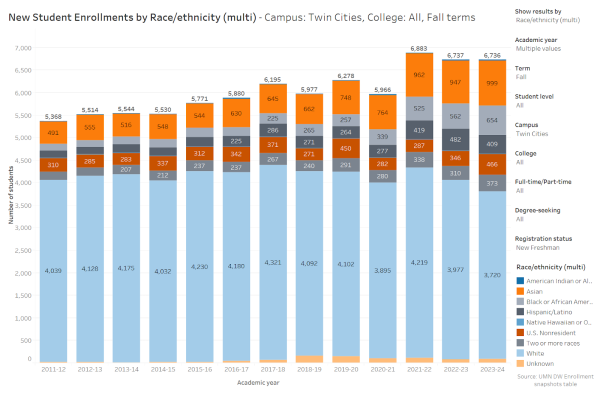
In the report, students of color are considered 19.7% underrepresented at the University. The University sets enrollment targets by department but do not track any representation targets for race and ethnicity.
Four out of every 10 Americans are people of color, according to the most recent 2020 population census. Diverse representation remains a key priority for the University, and research is mixed regarding how to increase diversity levels.
Admissions and diversity:
After California’s 1996 ban on race in admissions, the proportions of Black and Latino students at UCLA, one of the most highly selective schools in the state’s system, fell drastically.
A decade later, only 96 Black students enrolled in a freshman class of nearly 5,000, becoming known as the “Infamous 96.”
A Georgetown University admissions system simulation shows it is possible for colleges to exceed current diversity levels without race only by increasing consideration of low socioeconomic status combined with grades. However, maintaining projected diversity levels would require an expansion of financial aid that could put strain on college resources.
A U.S. Center of the Education and Workforce model shows race-conscious admissions most accurately reflect the population of graduates from the nation’s high schools. Research shows the most effective way to increase the representation of all historically marginalized racial/ethnic groups is to consider applicants’ race and ethnicity in the admissions process.
USG is soliciting feedback from students to see how they feel about this, and Davis said USG will be informed as those changes are being made.
Students on race in admissions
Third-year student Jose Vazquez said because of the institutional power white students benefit from, the consideration of race for equal applicants would be negligible.
“It is so easy for people in these predominantly white institutions, in positions of power that are not dominated by people of color, to not recognize systemic racism and all the ways that people in their intersecting identities are discriminated against every single day,” Vazquez said. “For them to not recognize and understand that we have to deal with so many more problems because of just living, especially within this system, that is terrible.”
Vazquez said the ruling will negatively impact how people of color see universities.
Cyrus Jarjay said he would like to think diversity could be maintained under the new policy, but said every step back is ultimately negative.
“My instinctual opinion is that background can still be included, because that essay is there,” Jarjay said. “With these Office of Admissions teams, not knowing what they put into that process, I am wary to truly say these changes will be effective.”
Looking forward
Other universities will still be able to widen application pools and dismantle some barriers for historically underrepresented students of color, namely socioeconomic ones. The University’s elimination of barriers like required ACT/SAT scores, preferences for legacy admissions or increased recruitment efforts in certain geographic areas would indeed contribute to a diverse student body, University Office of Admissions Communications Director Tanya Wright said.
“We are hoping students don’t rule it out too soon and then limit their options,” Wright said.
Research shows the Supreme Court ruling would almost certainly result in a drop in diversity. It is uncertain whether the ruling will change the holistic admissions process, according to the Office of Admissions.
Only time will tell if the University will be able to reach its diversity goals under a ruling that ignores race, according to Johnson.
The Office of Admissions remains committed to diversity, as a diverse campus is beneficial for white students and students of color alike.
Risic said the holistic review process has been based on a very careful academic assessment for the past 20 years and did not provide details on how additional racial context was considered before the ruling.
“There’s never just one deciding factor in the admission decision,” Risic said. “We are making a decision based on the overall assessment, with the primary factors being the academic factors and considerations.”
Correction: The original version of the article misstated when these changes went into effect. They took effect after the July Supreme Court ruling.
Correction: The original version of this article mischaracterized what targets are set by the University. The University does not track race and ethnicity targets.
This article has been updated.





